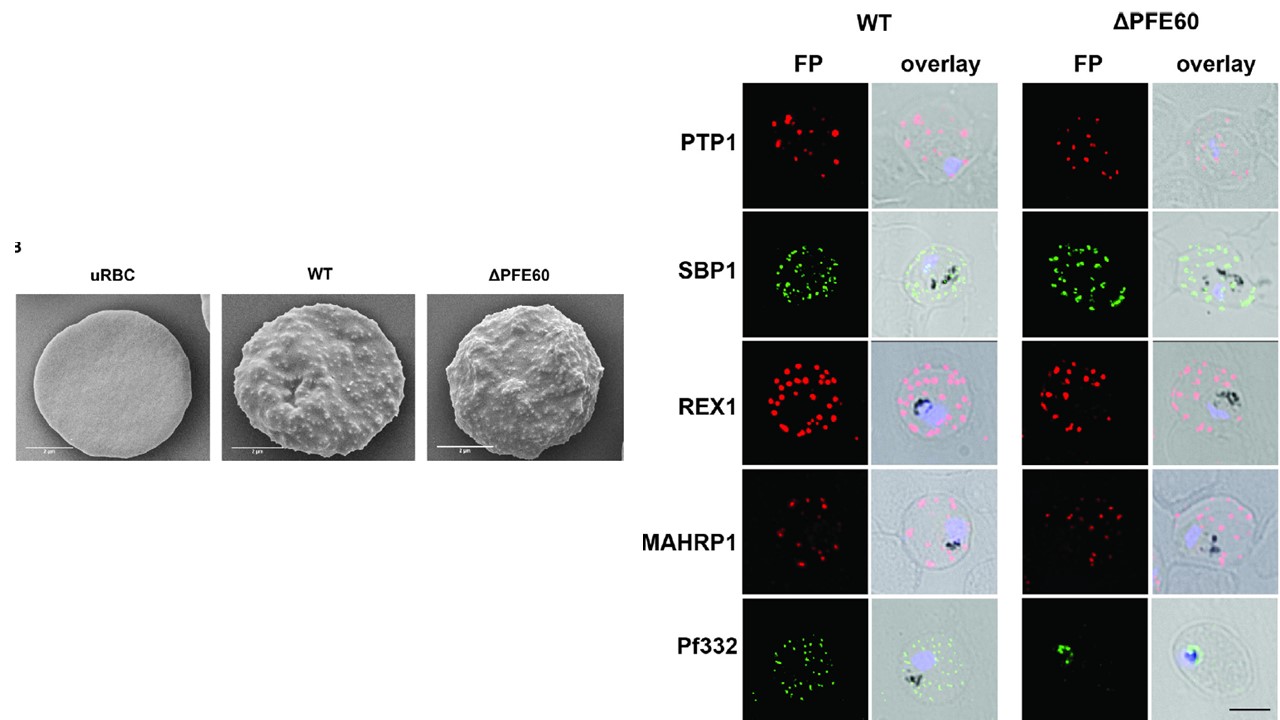Phenotypical analysis of Plasmodium falciparum export protein DPFE60 cells. (A) The Maurer’s cleft resident protein Pf332 is not correctly trafficked in the absence of PFE60. Trafficking of MC resident proteins PTP1, skeleton-binding protein 1, REX1 and MAHRP1 is not altered in DPFE60 versus wild type infected red blood cells whereas Pf332 is localised to punctate areas distinct from the MCs. wild type depicts IFA images of the wild type cell line and DPFE60 images of the DPFE60 cell line. Fluorescence pattern with respective antibodies; overlay, overlay of the fluorescence, with DAPI (to indicate nuclear location) and brightfield images. Scale bar: 4 mm. (B) Deletion of PFE60 does not cause significant changes in the surface morphology of Plasmodium falciparum infected red blood cells. The surface of uninfected red blood cells, wilde type and DPFE60 infected red blood cells was studied by scanning electron microscopy. Uninfected red blood cells display a smooth surface whereas wilde type and DPFE60 infected red blood cells show similar protrusions (knobs) all over their surface. Scale bar: 2 mm. Each image is representative of >20 studied cells.
Chang M, Faou P, Maier AG, Rug M. Plasmodium falciparum export protein PFE60 influences Maurer's cleft architecture and virulence complex composition. Int J Parasitol. 2017 Oct pii: S0020-7519(17)30302-8.
Other associated proteins
| PFID | Formal Annotation |
|---|---|
| PF3D7_0501200 | parasite-infected erythrocyte surface protein |
| PF3D7_0501300 | skeleton-binding protein 1 |
| PF3D7_0935900 | ring-exported protein 1 |
| PF3D7_1149000 | antigen 332, DBL-like protein |
| PF3D7_1370300 | membrane associated histidine-rich protein |
